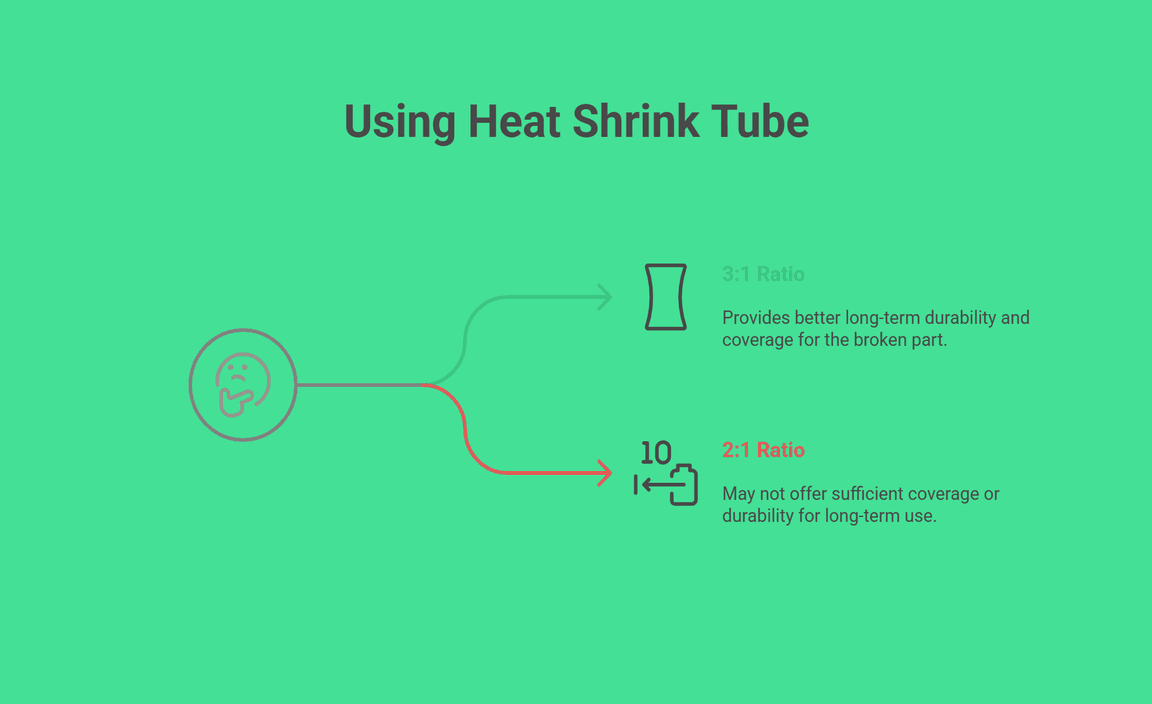Need to connect a different gas cylinder to your appliance? An adapter for a gas cylinder is a simple but essential piece of tech that lets you link various tanks and devices. It’s the secret tool for making sure your grill, heater, or other gas gear works with the fuel tank you have on hand. Don’t let mismatched fittings stop you; a good adapter is your quick fix!
Ever found yourself ready to fire up the grill, only to realize your propane tank won’t connect to your regulator? Or maybe you’ve got a portable heater that needs a smaller cylinder, but all you have are larger ones. It’s a common hiccup that can leave you frustrated and your plans stalled. This is where a trusty gas cylinder adapter comes into play.
Think of an adapter as a universal translator for gas fittings. It bridges the gap between different types of gas tanks and the hoses or regulators on your equipment. Without the right adapter, you simply can’t make the connection. But don’t worry! Choosing and using an adapter is much simpler than it sounds. We’ll walk you through exactly what you need to know, step by step, so you can get your gas-powered accessories up and running with confidence. Let’s dive in and make those connections work!
What is an Adapter for Gas Cylinder?
At its core, an adapter for a gas cylinder is a small device designed to change one type of gas fitting to another. Gas cylinders come with various outlet threads and valve types, and so do the appliances that use them. These differences exist for safety reasons and to ensure compatibility with specific gas types and pressures. An adapter acts as a connector, allowing a hose or regulator with one fitting type to securely attach to a cylinder with a different fitting type.
Imagine trying to plug a European electrical plug into an American outlet – it just won’t fit. Similarly, you can’t just screw any gas hose onto any gas tank. The threads might be different sizes, have different directions (right-hand vs. left-hand threads), or have different sealing mechanisms. An adapter is made to overcome these specific incompatibilities, providing a safe and leak-free connection between the two.
The “essential tech” part comes from how surprisingly crucial these small items are. They can be the difference between a fully functional outdoor kitchen and a weekend of disappointment, or between a warm campsite and a chilly night. They are often overlooked but are fundamental for versatility and problem-solving when dealing with gas appliances.
Why You Might Need an Adapter for Your Gas Cylinder
There are several common scenarios where an adapter becomes incredibly handy, if not essential:
- Connecting common appliances to standard tanks: Most backyard grills, for example, use a specific type of regulator and hose. If your propane tank has a slightly different valve, you might need an adapter.
- Using smaller tanks with equipment designed for larger ones: You might have a propane stove designed for a 20lb tank, but only have access to smaller 1lb or 5lb refillable cylinders. An adapter can let you make that connection.
- Adapting older equipment to newer tanks: Sometimes, manufacturers change their fitting standards. An adapter can help your older, perfectly good equipment work with modern gas cylinders.
- Using different types of LPG (Liquefied Petroleum Gas): Propane and butane are common LPGs, and they can sometimes have different connector requirements. While an adapter won’t change the gas itself, it can allow you to connect to the appropriate cylinder for the gas you intend to use.
- Portable applications: For camping, RVing, or tailgating, you often need to connect portable appliances (like a camp stove or a portable heater) to various sizes of propane cylinders, from small disposable ones to larger refillable tanks.
- Ensuring safety and optimal performance: Sometimes, a specialized adapter can improve the safety or efficiency of a connection by ensuring a proper seal and compatibility with the gas pressure.
Essentially, any time you have a mismatch between the outlet on your gas cylinder and the inlet on your appliance or regulator, an adapter is the solution you’re looking for.
Common Types of Gas Cylinder Fittings and Adapters
Understanding the different types of fittings is key to choosing the right adapter. This is where most confusion happens for beginners, but we’ll break it down.
Propane Cylinder Fittings
Propane fittings are the most common for everyday use in North America. The most prevalent types are:
- Type 1 (or QCC1) Connector: This is the standard fitting on most modern propane tanks (like the 20lb or 30lb ones used for grills) and many appliances. It’s a female connector designed for easy, hand-tightened connections. It has a valve that automatically shuts off gas flow when not connected to an appliance.
- P.O.L. (Polished Older Style) Fitting: This is an older style fitting found on many propane tanks manufactured before 1990. It has a male thread that screws into a corresponding female connector on regulators. It features a hand wheel to manually shut off the gas. P.O.L. fittings are almost always left-hand threaded, meaning you turn them counter-clockwise to tighten (lefty-tighty). This is a crucial safety feature to prevent accidental connection to incompatible setups. Modern appliance hoses often come with a P.O.L. adapter to connect to older tanks.
- Huffmanfitting (or 1″ x 20): This is a common thread size for smaller propane cylinders (like those used for small portable stoves, camping lanterns, or even on the side of larger RV tanks for quick-connect accessories). It’s a male thread that typically connects to a female fitting.
Butane Cylinder Fittings
Butane is often used in smaller, portable applications and can have different fittings:
- Bayonet fittings: These are common on small, disposable butane canisters for portable stoves or lighters. They are quick-connect fittings that you push and twist to lock into place.
- Threaded fittings: Some butane canisters might use threaded connections, similar to Huffman fittings but potentially with different specifications for butane.
Other Specialty Fittings
Depending on the gas and application, you might encounter other fittings:
- CG (CGA) Connectors: More common in industrial or medical gas applications, these are standardized fittings that ensure the correct gas and pressure are used. For example, CGA 600 is common for smaller lecture bottles of calibration gases.
- Specific RV fittings: Some older RVs or specific propane accessories might have unique quick-connect or threaded fittings.
Types of Adapters You’ll Find
Based on these fitting types, adapters are designed to bridge the gaps. Here are some common adapter configurations:
| Adapter Description | Connects From (Cylinder Side) | Connects To (Appliance/Regulator Side) | Common Use Case |
|---|---|---|---|
| Type 1 to P.O.L. | Type 1 (Female) on tank valve | P.O.L. (Male) on regulator | Connecting a modern regulator to an older propane tank. |
| P.O.L. to Type 1 | P.O.L. (Female) on tank valve | Type 1 (Male) on regulator/hose | Connecting a modern hose with Type 1 fitting to an older tank. |
| Type 1 to 1″ x 20 (Huffman) | Type 1 (Female) on tank valve | 1″ x 20 Male fitting | Connecting a larger propane tank to a regulator designed for a smaller cylinder. |
| 1″ x 20 (Huffman) to Type 1 | 1″ x 20 Female fitting | Type 1 Male fitting | Connecting a small cylinder with a 1″ x 20 valve to a hose with a Type 1 connector. |
| Propane to Butane Adapter | Often connects to a specific butane canister fitting. | Propane threaded fitting (e.g., to connect to a propane regulator meant for a 20lb tank). | Using a butane canister for applications that expect a propane connection. |
| Quick-Connect to Threaded | Various quick-connect systems (e.g., common on RVs). | Threaded fittings (e.g., 1″ x 20). | Connecting appliances with threaded inputs to RV propane supply. |
Important Safety Note: Always ensure the adapter is rated for the type of gas you are using (propane, butane, etc.) and the pressure it will handle. Never try to adapt a fitting for a gas it wasn’t designed for. For instance, some adapters are specifically for propane; using them with natural gas could be extremely dangerous.
How to Safely Choose the Right Adapter
Selecting the correct adapter is crucial for safety and functionality. Here’s how to go about it:
1. Identify Your Cylinder Fitting
Look closely at the valve on the gas cylinder you will be connecting to. What type of fitting is it? Is it a large Type 1 fitting, an older P.O.L. fitting with a hand wheel, or a smaller threaded fitting like 1″ x 20? If unsure, take a picture and show it to a knowledgeable salesperson at a hardware store or propane supplier.
2. Identify Your Appliance/Regulator Fitting
Next, examine the fitting on your gas appliance, regulator, or hose that needs to connect to the cylinder. What type of connector does it have? Does it expect a Type 1 connection, a P.O.L. connection, or something else?
3. Match the Adapter
Once you know the “from” and “to” fittings, you can look for an adapter that bridges that specific gap. For example:
- If your tank has a Type 1 valve (common on modern 20lb tanks) and your grill hose has a P.O.L. fitting (older style), you need a Type 1 (tank side) to P.O.L. (appliance side) adapter.
- If your tank has a P.O.L. valve and your grill hose has a Type 1 connector, you need a P.O.L. (tank side) to Type 1 (appliance side) adapter.
- If you want to connect a small camping stove with a 1″ x 20 male fitting to a 20lb propane tank (Type 1 valve), you’ll need a Type 1 (tank side) to 1″ x 20 Female adapter.
4. Check Gas Compatibility
Ensure the adapter is specifically designed for the gas you are using. Propane adapters will be marked as such. Adapters for other gases like butane or specialized industrial gases will have different specifications.
5. Look for Safety Certifications
Reputable adapters will often be certified by safety organizations. Look for markings like UL (Underwriters Laboratories) or CSA (Canadian Standards Association). This indicates the product has been tested for safety and performance. You can learn more about gas safety standards from organizations like the National Fire Protection Association (NFPA), which publishes codes related to fuel gases.
6. Consider Material and Build Quality
Adapters are typically made of brass or steel, which are durable and resistant to corrosion. Brass is often preferred for its excellent corrosion resistance and ease of machining, ensuring a good seal. Avoid adapters that look cheaply made or have visible defects.
If you’re buying online, read product descriptions carefully. Many products will clearly state “Connects [fitting A] to [fitting B]”. If you are still picking out your gear, consider buying an appliance that comes with a regulator and hose that matches your most commonly used tank types to avoid needing adapters in the first place.
Step-by-Step Guide: How to Connect a Gas Cylinder Using an Adapter
Connecting your gas cylinder with an adapter is a straightforward process, but safety is paramount. Always perform these steps outdoors or in a well-ventilated area, away from any open flames or sparks. Make sure all control knobs on your appliance are turned to the “OFF” position before you begin.
Step 1: Gather Your Equipment
You will need:
- Your gas cylinder
- Your appliance or regulator with its hose
- The correct adapter
- If connecting to a propane tank, a corrosion-resistant wrench (like a large adjustable wrench) to tighten the connector securely, though many modern Type 1 fittings are hand-tightened.
Step 2: Inspect All Components
Before connecting, check the cylinder valve, the appliance inlet, and the adapter for any damage, dirt, or debris. Ensure the O-rings (if any) are in good condition. A damaged seal can cause leaks.
Step 3: Attach the Adapter to the Cylinder (if applicable)
This is dependent on the adapter type. Some adapters are designed to screw onto the cylinder valve first, while others attach to the appliance hose.
- Example: P.O.L. to Type 1 Adapter: Many P.O.L. adapters are designed to screw directly onto the tank’s P.O.L. valve. Turn the adapter clockwise until it’s snug. The P.O.L. fitting itself has an internal valve that will be closed until the regulator is screwed onto it.
- Example: Type 1 to 1″ x 20 Adapter: If you’re connecting to a Type 1 tank, the Type 1 end of the adapter usually connects to the tank valve first. Ensure it’s hand-tightened securely.
Step 4: Attach the Appliance Hose to the Adapter
Now, connect the appliance’s hose or regulator to the other end of the adapter.
- Example Adapter (e.g., Type 1 tank side to P.O.L. regulator side): The other end of the adapter will have a P.O.L. connector (often with a hand wheel). You’ll screw the regulator’s P.O.L. fitting onto this adapter. Turn it clockwise. Many P.O.L. connections require a wrench for a secure seal. Tighten it firmly, but avoid overtightening, which can damage threads.
- Example Adapter (e.g., 1″ x 20 tank side to Type 1 appliance side): If the adapter is designed to connect to a regulator with a Type 1 fitting, you’ll attach that hose end to the adapter. Again, hand-tighten is often sufficient, but a slight snug with a wrench might be appropriate depending on the specific fitting type.
Crucial Assembly Tip: For fittings that require tightening with a wrench (like many P.O.L. connections or some Type 1 connections), hold the cylinder valve itself steady with one hand while using the wrench on the hose/regulator/adapter with the other. This prevents undue stress on the cylinder valve.
Step 5: Turn On the Gas and Check for Leaks
This is the most important safety step.
- Ensure all appliance control knobs are still in the “OFF” position.
- Slowly open the valve on the gas cylinder by turning the hand wheel counter-clockwise. For Type 1 connections, this is usually just turning the tank valve. For P.O.L., you open the hand wheel on the regulator assembly.
- Perform a leak test: Mix a solution of mild liquid soap (like dish soap) and water in a spray bottle or bowl. Brush or spray this soapy solution generously over all connections: the cylinder valve, the adapter, and the appliance hose connection.
- Look and listen for any bubbles forming. Bubbles indicate escaping gas, meaning there’s a leak.
- If you see or hear bubbles, immediately turn the cylinder valve off. Tighten the connection slightly (or loosen and re-tighten). Reapply the soapy water. Repeat the leak test.
- If the leak persists after a couple of attempts, do not use the equipment. Disconnect everything and consult a professional or the equipment manufacturer.
A good connection should have no bubbles at all. If it passes the leak test, you are ready to use your appliance.
Step 6: Turn On Your Appliance
Once you’ve confirmed there are no leaks, you can turn on the control knobs on your appliance to ignite the gas as you normally would.
When to Use a Wrench vs. Hand-Tightening
This is a common point of confusion, and the answer often depends on the specific fitting:
- Type 1 Connectors: These are designed for easy, hand-tightened connections. They often have a built-in valve that shuts off gas when the connection is not made.



